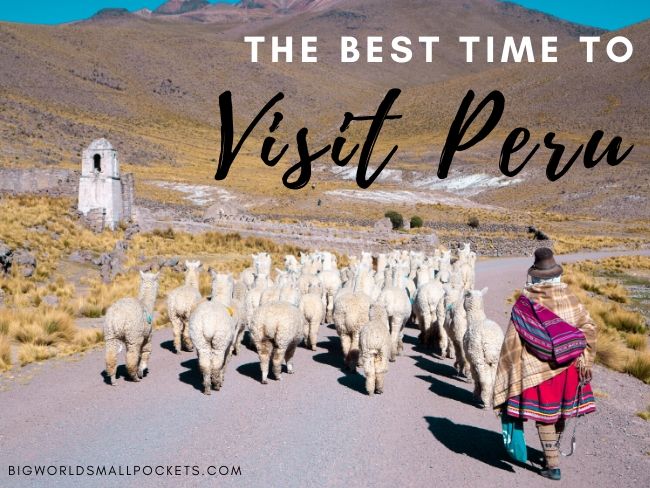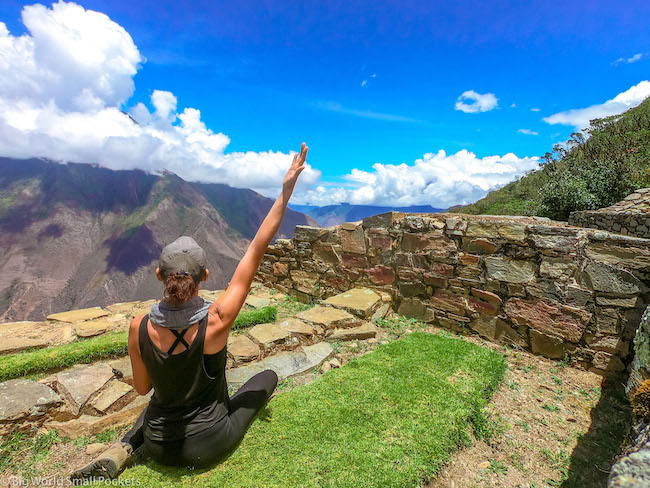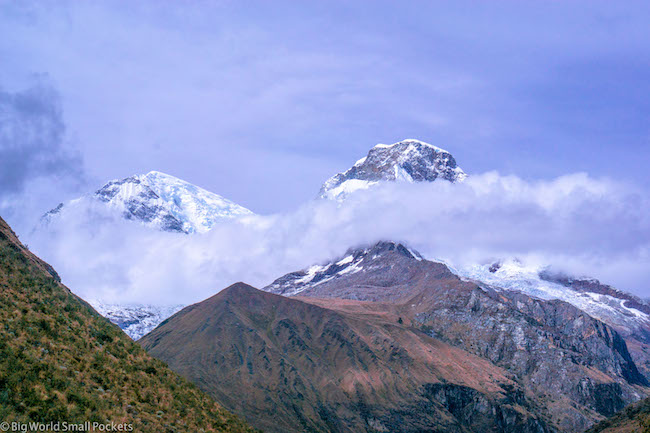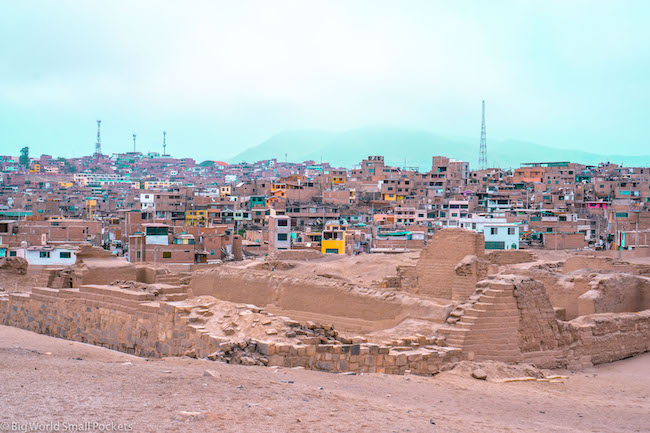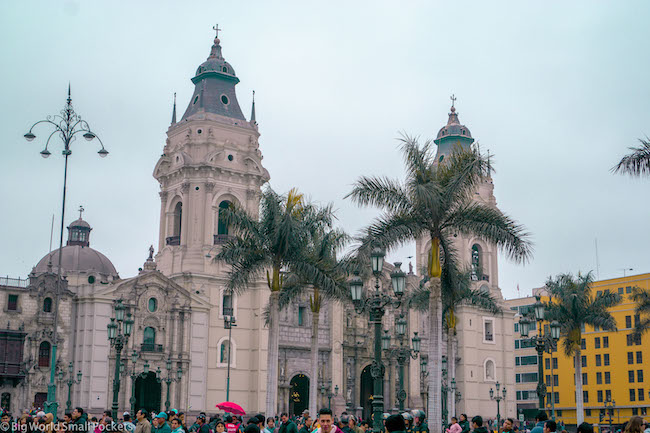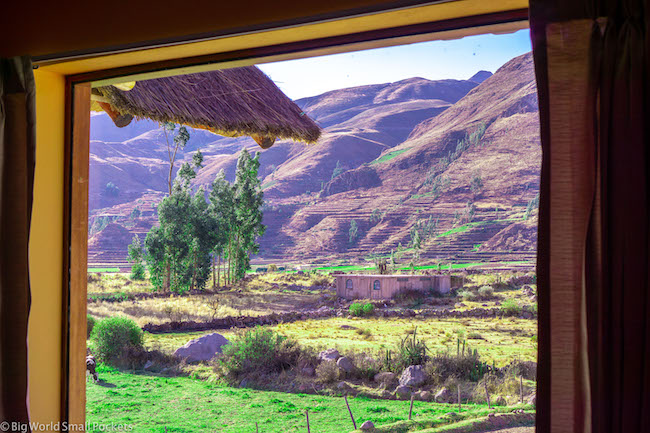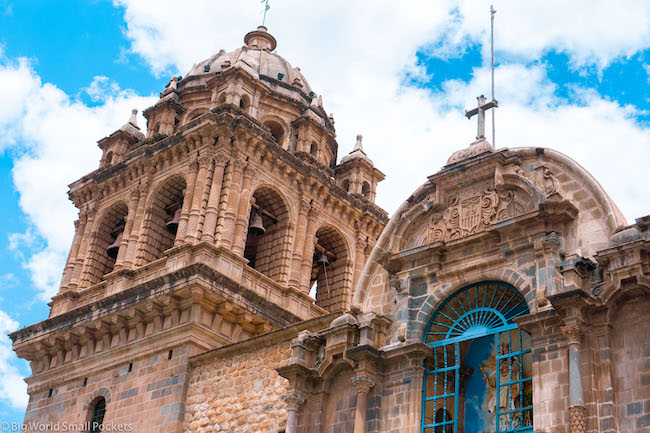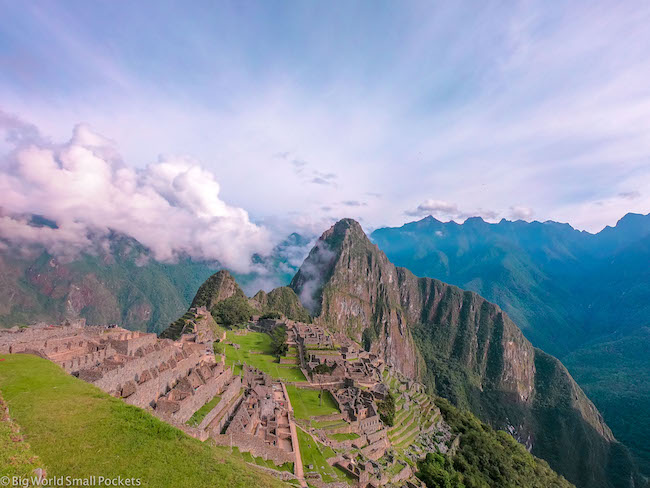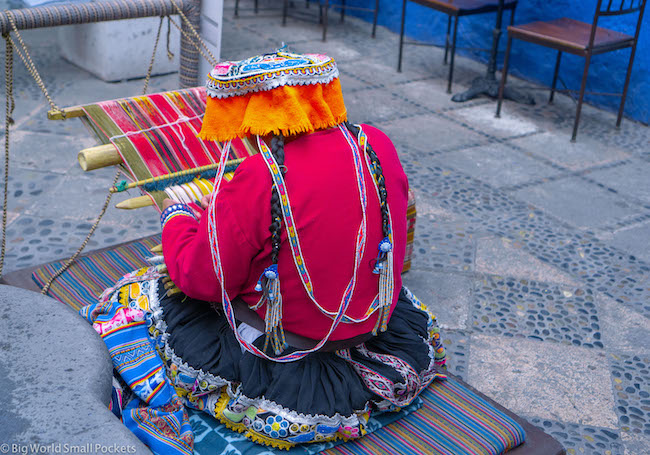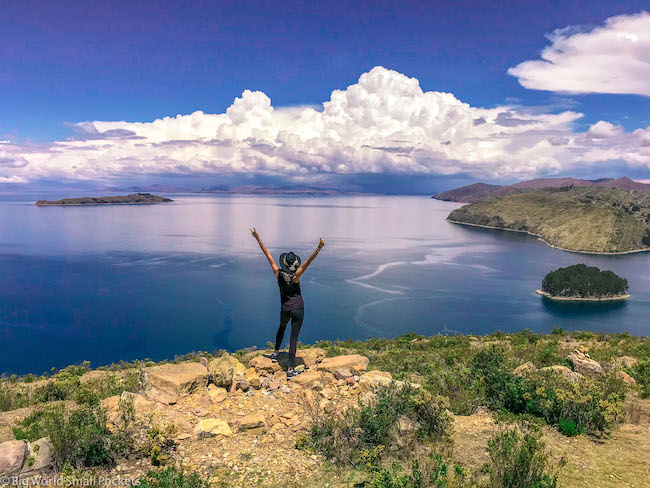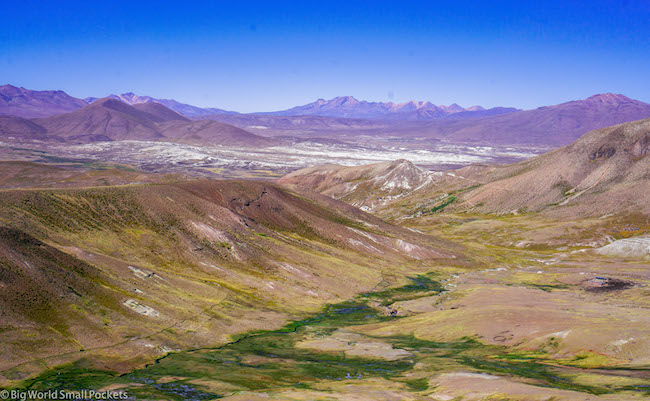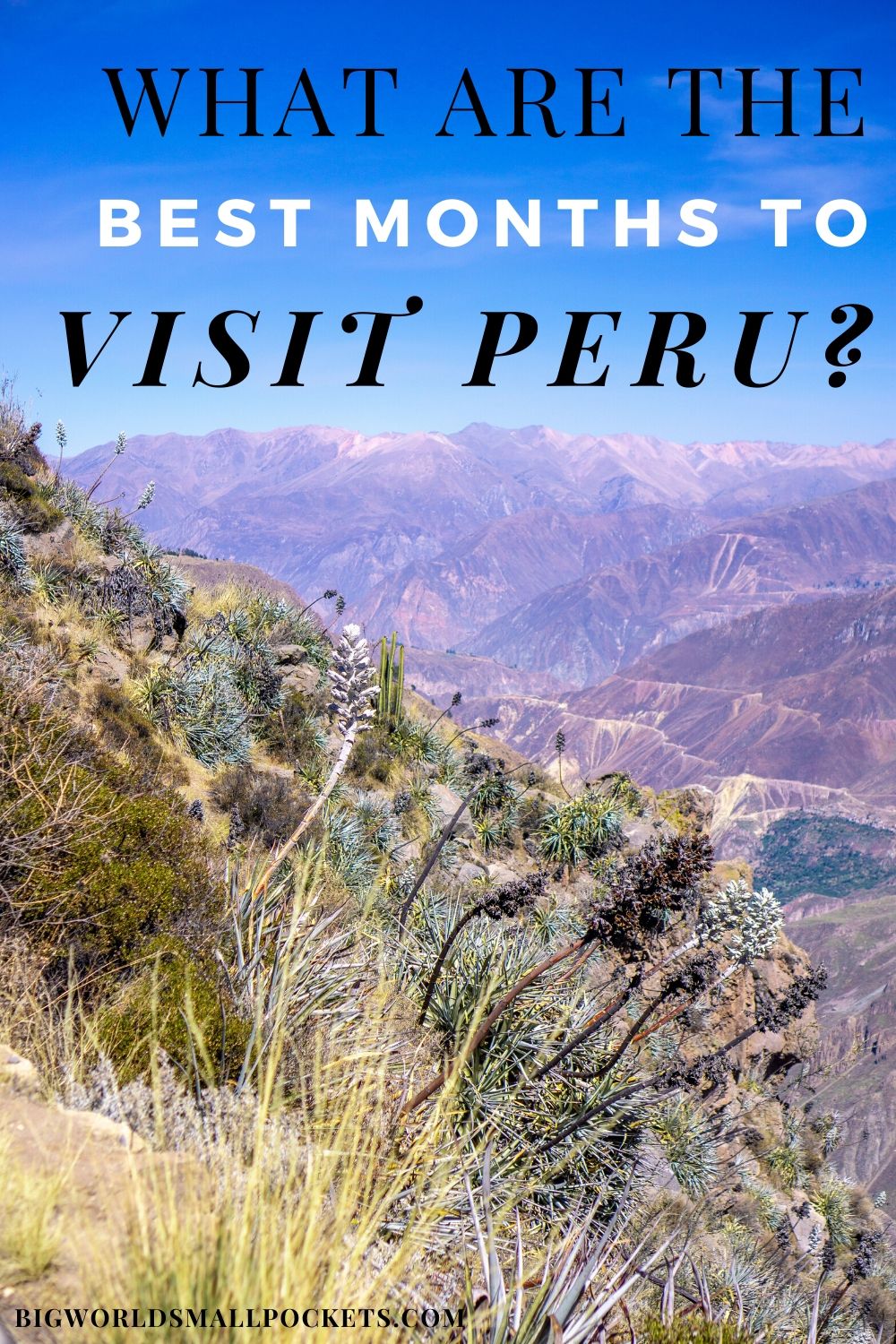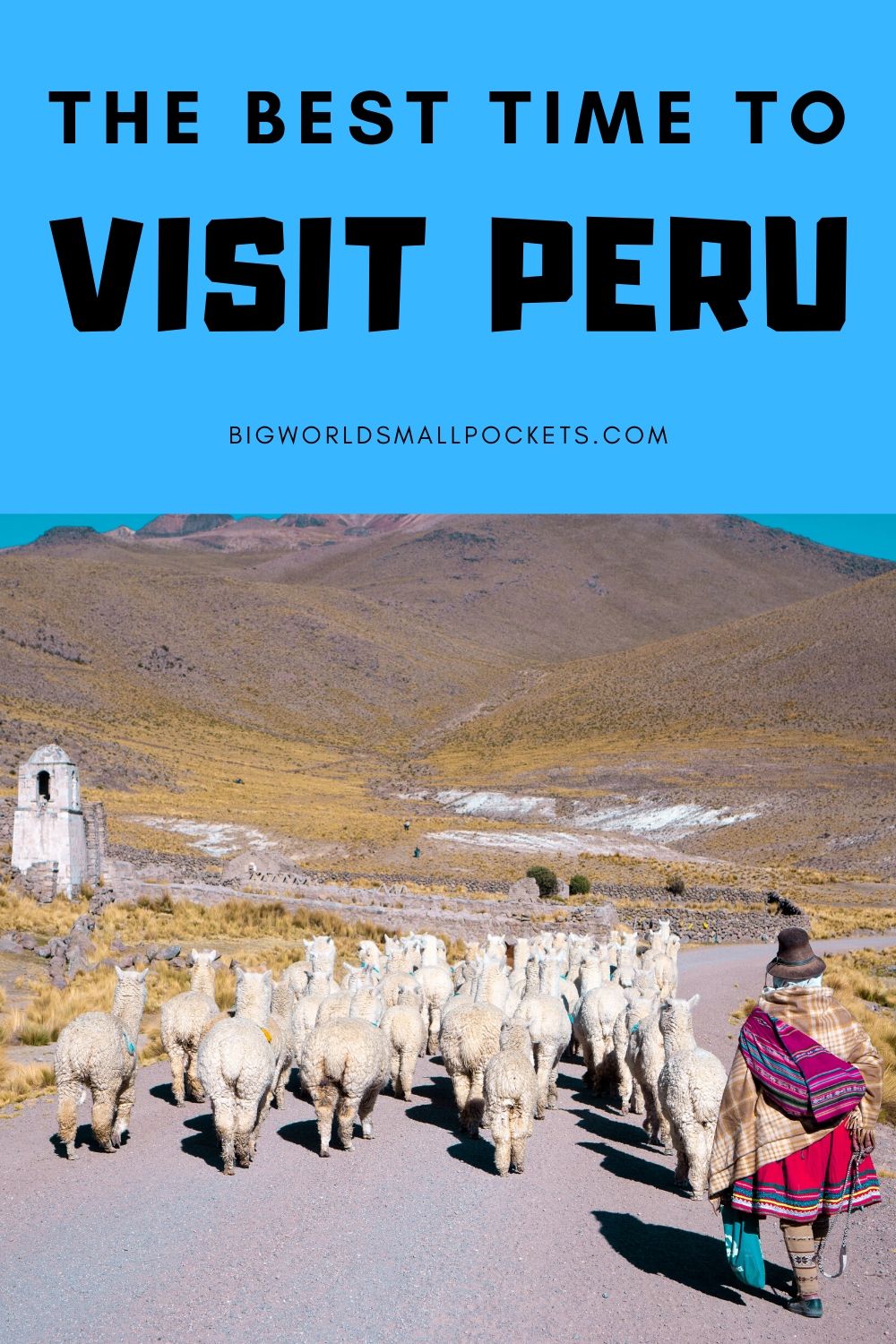It’s the question on everyone’s lips isn’t it?
At least it’s the question on the lips of those who want to travel to Peru!
Because for those, like me, who want to adventure in this amazing South American country, the question “when the best time to visit Peru?” is not easily answered!
Before I started doing the research for my Peru trip, I exclaimed in surprise when 2 friends said they were travelling there in June and July!
“But that’s winter in the southern hemisphere,” I cried”, “it’s going to be freezing and wet”.
Little did I know then just how wrong I could be about this and how June and July might just be the best time to visit Peru… depending on what you plan to do there!
So now, having spent 2 months in this country, and travelled from north to south, the Andes to the Amazon, I’ve got a pretty good grip on the factors involved in this complex question and am here to bring you all the research… and the answer!
Oh, and if you want to know why I loved travelling in Peru so much, check out this article to discover the answer…
Related Posts
- The Ultimate Peru Itinerary
- How Much Does it Cost to Travel Peru?
- Ultimate Peru Packing List : Tried & Tested
This page contains affiliate links meaning Big World Small Pockets may receive a small commission on any purchases at no extra cost to you.
When to Visit Peru?
The answer to when you should visit Peru is confusing to say the least.
Just a small search will bring you up a range of different answers which depend largely on where you want to go in this country and what you want to do there.
Not to mention your travel style and your budget.
And the reason it’s not straightforward is because of the enormity of this country, as well as the huge geographical diversity and number of terrains it spans.
From the north of Peru, which nestles the equatorial country of Ecuador, down to the south, some 5000km away, this is a vast country that sees huge differences in climate, temperature and rainfall.
As such, I’m going to break down the question by first outlining the climate of Peru, followed by a discussion around the best time to visit the different regions of the country, before finally coming to my conclusion about the best overall month to visit Peru.
You may also want to check out the post I wrote about the 13 key things to know before you travel Peru too 🙂
Just enter your details below and I'll email it you - simple!
Information will be sent to the email provided above
What is Peru’s Climate Like?
To give you some idea of the diversity of Peru’s climate, it’s worth starting with the fact that this country features 28 of the world climates.
From the steamy and humid jungle areas to the high altitude Andean peaks, as well as the dry desert and the low lying coast, Peru packs a mean travel punch, not least when it comes to knowing when to visit!
In general, however, there are 3 main climate areas to this huge country.
First up is the desert and the coast, which lie to the far west of the country and are loosely defined as everything in between the foothills of the Andes and the Pacific Ocean.
Known as La Costa, this area has a mild climate, in keeping with its tropical location and lack of altitude.
Cold, damp and grey in the winter, things get seriously hot here in the summer!
Next up are the Andes, or mountainous area of Peru, known as La Sierra.
With an altitude ranging from 1500m up to 5000m+, this central spine which runs through the middle of the country is largely determined by its height, with colder temperatures as a result and plentiful rainfall at certain times of the year.
And finally, we get to the steaming Amazon area of the country, which generally occupies the land to the east of the Andes and Peru’s eastern border with Brazil, Ecuador, Colombia and Bolivia.
This is actually the largest climate zone of Peru, known as La Selva, but due to its jungle terrain is one of the least inhabited and least frequented by tourists.
Across these 3 zones, Peru’s climate is largely be broken down, by locals, into summer and winter – aka a wet and a dry season.
Dictated by its position in the southern hemisphere, winter is generally seen as running between the months of May to October in Peru, and this is known as the dry season.
Conversely, summer runs from November to April and can loosely be described as the wet season.
It must be said however, these 2 seasons must be taken with a pinch of salt, as the 3 geographical zones I’ve outlined above are far greater indicators of Peru’s climate and the best time to visit.
Best Time to Visit Lima?
So let’s start with the capital Lima and its surrounding coastline.
In fact, it must be noted that Lima has its own micro-climate really, but we won’t get into this now!
Suffice to say, there’s a phenomenon known as garua – a thick grey cloud that hangs over the city from June to November – but once you escape the city and head to other parts of the coast, this quickly dissipates.
As such, the one thing you need to know is that the best time to visit Lima and the coast is during the Peruvian summer, predominantly the months of December through to February, when the garua has lifted.
This is when Lima and the coast is at its driest and hottest.
Although a very arid region that doesn’t really receive much rain at any time of the year, Lima is often grey and cold – despite its deserty surrounds – between March and October.
During these months, it’s certainly harder to enjoy much of the Pacific coast.
I visited Lima in September and even then, when it’s technically springtime, it was pretty cold with temperatures rarely getting above 18 degrees Celsius during the day.
Trousers and coats were certainly required, and even though it rained very little, it’s hard to describe the grey, overcast climate of Lima at this time as pleasant.
The thing to remember, however, is that few people travel to Peru for Lima.
This city isn’t all that and despite spending a week there – check out my list of the 19 best things to do in Lima if you have some time there too – I honestly wouldn’t base your analysis of the best time to visit Peru around the climate of the capital.
You’re far more likely to arrive there, spend a day or 2 hitting up the city sights and best Lima day trips, before setting off for another destination in the Amazon or Andes.
That said, December and January, when you do get to see blue sky and hit the beach are definitely the best times to visit Lima.
This is also quiet season for travel in Peru generally, because it’s raining in a lot of other places in the country!
Best Time to Visit Peru’s Amazon?
Which leads me nicely onto the next sub-topic, namely, when is the best time to visit Peru’s Amazon area.
The temperature drops here are far greater between day and night, than they are between different months, because this low-lying sub-tropical area is pretty hot and humid most the year.
Think temperatures around 30 degrees Celsius in the day and some rain at most times of the year.
That said, there are some months which experience a slighter greater degree of rain – although this is usually just through an afternoon downpour, rather than relentless showers that last the whole day.
The wet season in the Amazon is generally acknowledged as running from November to April i.e. the summer, while the dry season here is loosely defined as occurring between May and October.
Depending on what you want to do in Peru’s Amazon, both seasons can have their advantages.
The wet season is great for amazon boat trips, when rivers swell and navigating a tour through the Amazon waterways can bring a unique perspective.
It has to be said however, that spotting wildlife might be harder at this time due to thicker foliage and the fact that animals come less to the rivers for water as there’s a glut almost everywhere.
One animal that isn’t harder to find in the wet conditions, however, is the mosquito and travelling in the Amazon during rainy season does bring the higher risk of diseases these creatures carry such as malaria and yellow fever.
As always before you travel, I suggest consulting a qualified health professional.
World Nomads offers simple and flexible travel insurance. Buy at home or while travelling and claim online from anywhere in the world.
Alternatively, if you’re a long-term traveller, digital nomad or frequent remote worker seeking travel health cover, check out Safetywing’s Nomad Insurance policies.
The dry season in Peru’s Amazon is the better time to go if you want to enjoy some trekking here and have full access, because some parts of the jungle can be restricted during heavy rains too.
Humidity is also slightly lower in the dry season – around 80%.
Yes get ready to sweat whenever you visit here!
Best Time to Visit Cusco?
The same can’t be said, however, for Cusco.
Situated high up in the Andes, this is the main town tourists head for in Peru’s 3rd climate zone – La Sierra.
There’s absolutely no doubt things can get chilly up in the clouds here, especially at night when temperatures can plummet to zero and, in the day, sometimes never rise above 15 degrees Celsius.
These sorts of numbers are most common during the months of June through August, which represent the coldest time of the year here – essentially Peru’s equivalent of the depths of winter.
But winter is also the driest time to head to the Andes, and as most people come to Cusco, the Sacred Valley, Rainbow Mountain and Lake Titicaca for the hiking, it really is worth braving the cold for some drier blue skies.
Learn more in my post about the 21 best things to do in Cusco.
In the wet season, the temperatures in La Sierra are slightly higher, hovering around 10 degrees at night and 20 in the day, but the wet conditions don’t make it a fun place to be, especially in January and February when it can bucket it down for days on end.
That said, there’s definitely less tourists around at this time and the scenery is wonderfully lush and green, making for some great photos.
I visited Cusco in the month of October and found it a great mix between the high season crowds and blue skies vs the lack of other tourists and a bit of rain.
Only one trip I planned was cancelled due to the weather during the 3 weeks I spent hiking in and around Cusco and that was right at the end of October when I was meant to be enjoying a day tour to Rainbow Mountain.
After 4 hours driving there, we discovered it had snowed overnight and promptly had to turn around and come all the way back because the peak was blanketed in a thick layer of the white stuff and inaccessible.
Lesson learnt, don’t head to the Peruvian Andes in the wet season (November to March) if you want to hike.
At the other end of the spectrum, April does make one of the best times to visit Cusco, because the rains are drying up, it’s not yet too cold and the crowds are too bad!
Best Time to Go to Machu Picchu?
And right near Cusco, well near in Peru terms, is the top tourist attraction in this country, the world wonder that is Machu Picchu.
While Cusco may be passable to visit in the wet season, Machu Picchu really is not, with landslides in this remote area common and access to the site often closed as a result.
For the whole of February, the Inca Trail is indeed shut, so don’t consider coming to Peru then if this on your bucket list.
If you are travelling in Feb however, then do consider a hike to Choquequirao instead.
An amazing 4 day trek I’m calling the best Inca Trail alternative, you can find all about the hows, whats, whys and wherefores in this post I wrote all about my experience.
But let’s be honest, who wants to come all the way to Peru and not get to visit Machu Picchu?!
But who wants to go and not be able to get a single photo without anyone else in it either?
Not me!
And that’s again why I chose to visit Machu Picchu in the shoulder month of October, instead of the June to August high season when you’ll definitely need to buy your entrance tickets in advance.
With good weather and less people, I think it was the perfect decision.
Equally April and May, before the northern hemisphere summer holiday folk arrive, also make good choices for the best time to visit Machu Pichu when it comes to balancing crowds vs climate.
Check out this great tour to Machu Picchu if you’re on a budget and learn more in my post about how to get there.
Cheapest Time to Travel to Peru
If money is more an object for you, then perhaps the low, winter, wet season does have some appeal as prices will definitely be cheaper in Peru from December to April.
Everywhere outside Lima that is, because it’s high season there at that time!
To get the best of both worlds therefore, why not bat for the shoulder seasons of Sept / Oct or April / May for your trip to Peru?
The only time you really want to avoid if you’re looking for the cheapest time to travel to Peru is the peak Andean hiking months (and northern hemisphere holidays times) of June, July and August when prices soar and you need to book many activities well in advance.
Best Time to Visit Bolivia & Peru?
Having similar climate zones to Peru in terms of mountains and jungle (minus the coast, it’s a sore point, don’t ask) the best times to visit Bolivia are actually similar to its northern neighbour.
This means May to October are the high season months with less rain and more blue skies.
Again, it’s colder at this time of year, but a much better season for hiking and jungle excursions.
This is great news if you want to combine a trip to Peru with some time in Bolivia too, because the main attractions in this country of Copacabana and Lake Titicaca, La Paz, the Uyuni Salt Flats and the Amazon are all best visited at the same time.
Best Month to Visit Peru Overall?
So to sum up, here’s a short breakdown of the months in which you can visit Peru.
November – March
Technically the summer season Lima has blue skies and less rain during these months, making it high season there. But December to March have the highest rainfall in the Andes areas of Cusco, Arequipa and Machu Picchu, as well as the Amazon. In February, the Inca Trail is closed and many other places may be inaccessible. Cheapest prices can be found at this time, as well as lush green scenery, but these are difficult months to hike in.
April – May
The Autumn shoulder season months which are good for visiting the Andes and the Amazon. Mid-range crowds and prices also makes them attractive. Temperatures are cooling in the Andes and the coast, but still pleasant enough for travelling.
June – August
High season to travel in Peru with prices at the top level and crowds at their thickest. Lowest rainfall levels can be found in the Andes and the Amazon, with the latter experiencing slightly less humidity and heat at this time too. However, these are the coldest months in Cusco, Machu Picchu, Arequipa and Colca Canyon so bring lots of warm layers. In the winter, dry season, it’s cold and grey in Lima.
September – October
The Spring shoulder season months make another great time to visit Peru. Again prices and crowds are mid-range, temperatures aren’t too cold in the mountain areas, sunny skies predominant and rainfall shouldn’t dampen your hiking experiences or landscape views too much.
Overall then, it’s the shoulder months of April and May or September and October that get my vote as the best time to visit Peru.
The prices are good, the number of other tourists bearable and the temperatures in both the Andes and the Amazon are manageable.
Equally the coast is not too bad at this time of year either with blue skies showing themselves occasionally in Lima and elsewhere, along the Pacific, travel should also bring warm, sunny days.
PIN IT TO PINTEREST!
Have you travelled to this amazing country?
What do you think is the best time to visit Peru?
Join the discussion in the comment box below…

